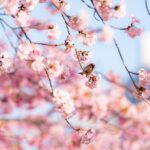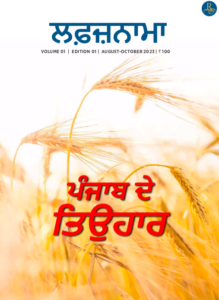Haiku Blossoms (11)

KOBAYASHI ISSA (1763-1828)
Friends, last week we discussed the work of the great master of haiku Matsuo Bashō. This week let us learn about Kobayashi Issa who is revered in Japan and internationally as one of the greatest poets of the haikai tradition, ranked with Matsuo Bashō and Yosa Buson.
EXCERPTS TAKEN FROM THE HAIKUPEDIA ARTICLE, KOBAYASHI ISSA, BY DAVID G. LANOUE.”
GRATEFUL TO HAIKUPEDIA, THE HAIKU FOUNDATION, FOR THEIR KIND PERMISSION
As a widely admired poet in translation, Issa is, without doubt, the second most celebrated haiku poet in terms of his international reputation. He was a prolific poet who participated in more than 250 renku sessions (that we know of) and who left behind in his journals more than 22,000 haiku (if we include variants of verses). Issa is known and celebrated for his compassion for both humans and animals; for his delight in children; for his deeply subjective verses about the joys and tragedies of his personal life; for his sincere devotion to Buddhism; for his irreverent humor; and for his daring willingness to satirize authority figures, both secular and religious, of the rigidly hierarchical society of early modern Japan. If Bashō is the most revered poet of Japanese haiku tradition, Issa is, arguably, the most loved.
The memory of the traumatic loss of his mother when he was three years old, and the sorrows that resulted from that event still stung the poet at age fifty-two, when he wrote this haiku, which he later identified in a headnote in Pale Blue Sky to be a childhood memory:
come and play
with me …
orphan sparrow
This is one of Issa’s most famous haiku in which he addressed an animal as a friend and a peer. He felt not only sympathy for the motherless bird; he saw himself in it.
MAJOR THEMES IN ISSA’S WORK
TRANSIENCE
The dewdrop-like elusiveness of happiness in Issa’s life, a Buddhist theme that the poet himself raised in countless haiku, has led some critics to stress his human and suffering side within the context of Pure Land Buddhism.
*
come what may
trusting in the Buddha …
the year ends*
*
Amida Buddha watches
them scatter …
cherry blossoms
Throughout his works, Issa’s hopeful faith in Amida’s compassion far outweighs the grumbling doubts of his darkest moments.
COMPASSION FOR AND IDENTIFICATION WITH ANIMALS AND CHILDREN
Issa’s compassion for fellow creatures, human and nonhuman, is a hallmark of his philosophical and poetic approaches to life.
the calf begins his journey … autumn rain
The calf has been sold and now is being led away, forever, from his mother. The image becomes even more pathetic and poignant if we take into account Issa’s loss of his own mother in early childhood and his decision to leave an unhappy home, dominated by a cruel stepmother at age fifteen.
*
not knowing that
autumn’s begun, a child
Buddha!
*
not knowing that
autumn’s begun, puppy
Buddha!
*
Issa celebrated the innocence, spontaneity, imaginations, and energy of children. A great example is perhaps his most famous portrait of childhood, and suggests how an adult poet might return to a state of primary consciousness in order to become, in his heart and imagination at least, a child again.
*
snow melting
the village brimming over …
with children!
*
from the great bronze
Buddha’s nose …
a swallow!
HUMOR
Since animals resemble people in so many ways, Issa took the next logical step in his poetic depictions: he spoke to them. In this next haiku, for example, he alerted a frog of a wonder to behold while at the same time exemplifying another of his poetic traits, irreverent humor.
*
get ready to see
my piss waterfall!
croaking frog
*
This is a haiku of two perspectives: Issa’s viewpoint, looking down at the frog as a sort of Gulliver among Lilliputians, and the frog’s perspective, from which Issa appears as a giant and his bodily function a roaring cascade. Both points of view are legitimate. Through his playful imagination, Issa has invited us to consider (and chuckle at) how the world looks through the eyes of another of the world’s citizens, a frog.
*
the war lord
forced off his horse …
cherry blossoms
*
In this remarkable haiku Issa not only repeated the motif of a man of war appreciating nature’s delicate beauty; he slyly suggested that this beauty, owned by no one and existing beyond the system of the human social ranking, outranks a daimyo.
Issa also poked fun at authority figures within the community of Buddhist priests.
*
the high priest
poops in the field …
parasol
*
Issa caught the high priest of a Buddhist temple literally with his pants down, not a very flattering portrait. This comic portrait, instead of disrespecting the high priest, might more accurately be understood to be humanizing him. However, because the priest does his business under a parasol, the reader might reasonably imagine a second person in the scene: a young acolyte, perhaps, holding the parasol and politely looking away. The implied presence of a lower-ranked parasol holder imbues the haiku with an added element of satire. The high priest ridiculously insists on the privilege of his social standing even in an undignified moment that reveals him to be just another of the world’s animals.
BUDDHISM
As we have seen, Buddhism pervades Issa’s poetry. His awareness of transience, his compassion for other beings, and his belief that children and animals are closer to enlightenment than most adult human beings … all of these notions plainly emerge from a Buddhist world view. Nevertheless, it is important to acknowledge Buddhism itself as a separate, major theme in Issa’s work. It is no coincidence that he called himself Issa-bō haikaiji—Priest Issa (一茶坊 issa-bō) of Haiku Temple (俳諧寺 haikai-ji). His priestly way of life, and way of thinking about that life, naturally and profoundly influenced his art. Priest Issa’s little poems often hinged on specifically Jōdo Shinshū concepts of sin, grace, faith, and salvation, as the following example shows:
*
on the flower pot
does the butterfly also hear
Buddha’s promise?
*
He was no mere “child’s poet,” nor was he, as D. T. Suzuki once claimed, a shallow Buddhist. When we examine closely Issa’s haiku in connection with Pure Land Buddhism, we arrive at a richer and more semantically grounded understanding of what “Priest Issa of Haiku Temple” was about as an artist and as a man. Consider this famous image of a pilgrim snail creeping up the side of Japan’s most sacred mountain.
*
little snail
inch by inch, climb
Mount Fuji!
*
Figuratively, the snail climbs to the goddess’s blessing; the snail climbs to enlightenment.
SUBJECTIVITY
A fourth characteristic of Issa’s style is his penchant for transforming the personal into art. He did not hesitate to tell the story of his life in his haiku. Issa’s complete works include thousands of verses that relate all sorts of situations and moods in highly personal, intimately autobiographical statements.
*
in hazy night
stepping into water …
losing my way
*
Paradoxically, Issa’s most subjective and personal verses are often the ones with the most universal application. The “I” in Issa’s poetry is, at the same time, a flesh and blood person and an Everyman whose adventures, emotions, and insights reveal common human experiences: rootlessness, loneliness, compassion, joy, sarcasm, sorrow.…
Today, Issa is a world treasure. Though his popularity in Japan endures, with new books about him appearing every year, he is becoming just as recognized and admired in other countries, as more and more translations are published around the world. He is a poet who speaks to our common humanity in a way that is so honest, so contemporary, his verses might have been written this morning.
*
Hope this article will broaden your understanding of the haiku penned by Issa and the themes which moved him to pen haiku. In Chapter 20 of “History of Haiku”, Vol. 1, R. H. Blyth writes “Issa wrote 54 haiku on the snail, 15 on the toad, nearly 200 on frogs, about 230 on the firefly, more than 150 on the mosquito, 90 on flies, over 100 on fleas, nearly 90 on the cicada, and about 70 on various other insects, a grand total of about a thousand verses on such creatures.” Try writing haiku on the smallest creatures you see this week!















